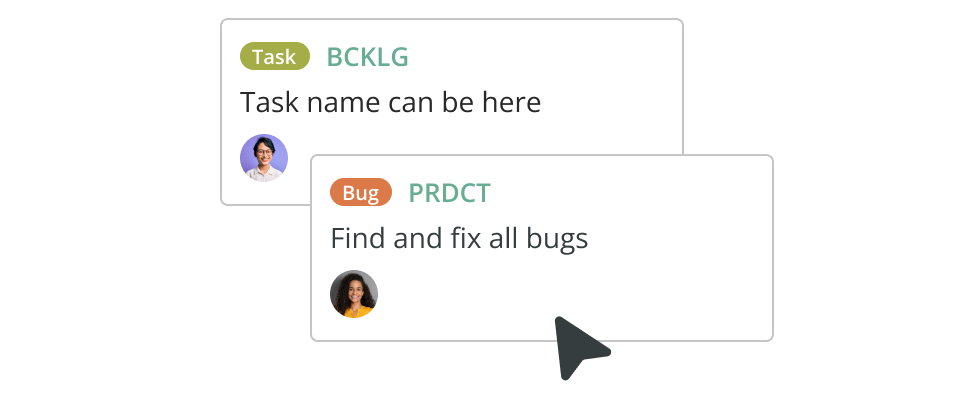Think of your favorite coffee shop. What do you love about it? Nice coffee, obviously. But you also love the coziness, the barista who remembers your order, and the fact it’s never too crowded. Now think about why you keep going back. It’s more than just the brew — it’s the whole thing. This is what good customer experience (CX) design does for your products.
What is customer experience (CX)?
CX is a process designers follow to improve the user journey at every touchpoint. This means the whole sales funnel and beyond, from ‘awareness’ through to ‘action’ and post-sale support.
CX works on the principle that people don’t buy products; they buy emotional connections. When you build these positive interactions, you form an emotional bond with your customers. This leads to loyalty and trust, which are gold in a world of endless choices.
It also means you have a shot at turning loyal customers into brand ambassadors. These are your VIPs who spread the buzz about your business. Word-of-mouth is one of the most powerful marketing tools out there because people trust recommendations from friends and family more than any ad.
What’s the difference between customer experience design and UX design?
CX design refers to the entire customer journey. It’s market-centric and deals with things like advertising, brand image, value, sales, customer support, and so on.
UX design, on the other hand, hones in on the specifics of how users interact with a product. It’s more about the details within that broader journey. So usability, accessibility, visual design, and so on.
| Customer Experience Design (CX) | User Experience Design (UX) | |
| Focus | Entire customer journey | Specific product interactions |
| Scope | Broad, includes all touchpoints | Narrow, focused on usability |
| Objective | Create overall satisfaction and loyalty | Improve product functionality and user satisfaction |
| Examples | In-store experience, customer service, marketing materials | Website navigation, app interface, button placement |
| Approach | Holistic, strategic | Detailed, tactical |
What are the benefits of good CX design?
Here’s why it’s well worth your time.
Happier, more loyal customers
When customers enjoy the journey, they’re happy. And when they’re happy, they’re more likely to stick around, buy more, and recommend your brand to their friends and family. This means repeat business and a lower customer acquisition cost.
Market cut through
People expect seamless, personalized experiences across every channel. And if you don’t meet these expectations, there’s no shortage of those who will. CX design helps you stay competitive by continuously improving the customer journey. Plus, when everyone’s lineup looks similar, great CX can set you apart.
Know your customers better
Gathering this feedback gives you insight into how things feel for your users. With this knowledge, you hone in on what they really need, making confident decisions about product development, marketing, and customer service.
Better financial performance
Companies that prioritize customer experience tend to thrive. Happy customers spend more, they’re less price-sensitive, and they recommend you to their friends. All of which is, of course, great news for your bottom line.
Aligned teams
A good CX strategy shows what needs to happen when, and who’s responsible for each stage. This streamlines the customer management process, which is especially useful for support teams. With a set of protocols in place, they’ll know which route to take and which department to contact at any given time.
How CX design optimizes the customer journey
Now we’ve covered the what and why, let’s look at the how.
Mapping out the customer journey
CX design maps out the entire customer journey. This involves pinpointing every moment a customer interacts with your brand. Clicking a banner ad, visiting your site, going through checkout, seeking support, and beyond. When you understand this journey, you can improve each brand-customer moment, smoothing out any friction points along the way.
Using customer feedback
CX design refines these touchpoints using customer feedback. This means actively listening to your customers’ experiences and pain points. Surveys, reviews, and direct feedback give valuable insights. With this information, you can make targeted improvements that address specific issues and enhance the overall experience.
Personalization
Customers expect personalized experiences. CX design uses data to give just that, offering them tailored recommendations, offers, communications, and more. This makes users feel valued and understood, boosting satisfaction and loyalty.
Consistency
It doesn’t matter whether the customer is using their mobile, computer, or in-store — your brand should feel cohesive across all of them. This consistency builds familiarity, which creates trust and makes it easier for customers to navigate their journey.
Simplifying processes
Customers appreciate when things are easy. By streamlining various actions, like making a purchase or finding information, you lower the cognitive load, keep frustration to a minimum, and improve the overall experience. Think of it as clearing the path for your customers so they can enjoy the journey without clambering over hurdles.
Proactive support
Anticipating customers’ needs head-on and fixing potential issues before they pop up makes their experience better. This might include offering helpful information at the right time, making support easy to access, or simply solving problems before the customer has fully recognized them.
Continuous improvement
The customer journey isn’t static. It evolves as regularly as customer tastes and the market. Reviewing and updating your CX strategies along the way means you’re always delivering something customers need and want.
The customer experience design process
Customer experience (CX) design follows a structured process. Let’s break down the steps.
Gather customer feedback and data
How can you make your customers happy if you don’t know who they are or what they want? Research forms the foundation of customer experience design. The more work you put in here, the better your efforts.
- Use surveys and questionnaires: They’re quick and high volume. Make sure the questions are clear and cover a range of topics related to the customer experience.
- Monitor social media and online reviews: These places are goldmines for candid customer feedback. Keep an eye on places like Yelp, Google Reviews, or industry-specific forums, all of which give you real-time insights into how people feel about your offering.
- Run focus groups and interviews: For more in-depth feedback, have some one-on-one time with your customers. Unlike surveys, you can probe for more info based on the participants’ responses, giving you insight surveys might miss. Both have the added benefit of you being able to ask follow-up questions.
- Analyze customer data and behavior: Look at metrics like website analytic and customer service interactions. This data shows you where you can make some tweaks.
- Use customer feedback tools and platforms: Tools like SurveyMonkey, Qualtrics, and Google Forms streamline the survey process. Meanwhile, customer feedback platforms like Medallia or Zendesk integrate feedback collection with data analysis.
- Implement feedback loops: Finally, make this official and recurring with feedback loops. Set up processes for data collection and feedback. It’s a way to build continuous improvement into your CX process.
Build customer personas
It’s much easier to empathize with a person than it is a faceless crowd. User personas, which are fictional representations of your ideal customers, help you do just that.
- Collect the right data: Personas are based on real data and insights. This includes demographic details (age, gender, location, occupation, etc); behavioral data (purchasing habits, website interactions, preferred communication channels, etc); and psychographic information (interests, values, and lifestyle choices, amongst other things).
- Segmenting your audience: Once you have your data, split your audience up into distinct groups, based on how the members interact with your brand. E.g Frequent shoppers, tech savvy users, and so on.
- Creating detailed personas: For each segment, create a detailed persona. Give each persona a name, plus a photo/illustration, and a backstory to make them feel fleshed out. Include as much relevant info as you can.
- Use personas to guide your CX: Refer to them when developing marketing strategies and designing products. Ask yourself how each segment will react to changes or new initiatives to keep every decision customer-centric.
- Updating personas regularly: Customers change over time, so review and update to stay relevant.
Create customer journey maps for each persona
Journey maps are visual representations of the steps your customers go through when they interact with your brand. They help you understand their experiences, identify pain points, and spot opportunities for improvement.
- Create your journey map: We won’t get into the details here, since we already have a walkthrough and a template — but to summarize: set out your goals, identify every touchpoint, use data and feedback to add current customer emotions to each one, locate pain points and opportunities, then visualize the journey (ideally via a diagramming tool).
- Using your map wisely: Share them with relevant teams across your organization so everyone’s streamlined, then use it to guide your strategy.
- Keep your map updated: Customer journeys can evolve over time, and so should you map. Regularly review and update based on new feedback and data.
Suggest changes based on your maps
Now it’s time to put those customer maps to use. This involves analyzing it to spot areas of improvement and making strategic changes to fine-tune the overall customer experience.
Scout for pain points: Look for patterns in the feedback and data that highlight common issues. These could be points where customers drop off or express unhappiness.
Prioritize areas for improvement: Prioritize pain points based on their impact on the customer experience and how well they align with business goals. This helps you focus resources on the most critical/impactful areas first.
Brainstorm potential solutions: This might involve simplifying processes, adding new features, improving communication, or redesigning certain aspects of the customer journey. Collaborate with different teams to gather a range of ideas.
Implement and test changes
- Make customer-centric changes: Think about how each change will affect the customer’s actions and emotions at different touchpoints. Begin with incremental changes and gather feedback before launching into a full-scale rollout.
- Keep gathering feedback and iterate: Use surveys, data analytics, and so on to see whether the changes have fixed those pain points and improved the overall journey.
- Monitor metrics: Net Promoter Scores (NPS), conversion rates, and customer retention rates can give you useful insights into how your changes impact the business, as well as the customer.
- Make continuous improvement a way of life: Encourage teams to regularly review and update customer journey maps, stay tuned into customer feedback, and be proactive when suggesting and implementing changes. This keeps you relevant in a changing market.
Use diagramming tools to save time
Creating a standout customer experience (CX) design strategy is all about understanding and delighting the people who use your products. Get to know them through detailed personas and journey maps that go beyond basic demographics. Craft personalized experiences that really resonate.
Collaborate across teams — marketing, sales, customer service, and more — to keep every interaction smooth and consistent. And use data analytics to uncover insights and track how well your efforts are working. Remember, the work doesn’t stop: keep refining your strategy to meet changing customer expectations.
Diagramming tools make the process easier. They’re fantastic for visualizing customer journeys and brainstorming as a team, helping you spot areas for improvement and innovation in your CX design. Best of all, with Cacoo, you can save time thanks to templates and then share your creations with the rest of the team, keeping everyone aligned every step of the way. Give it a try today.





